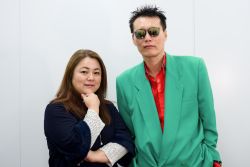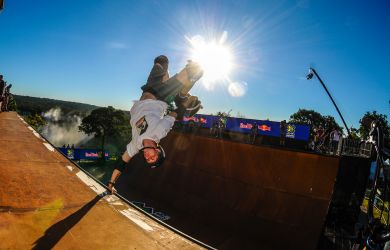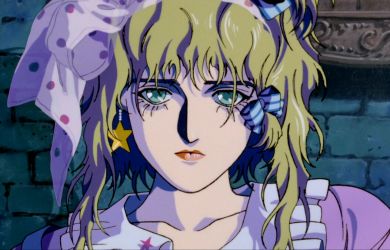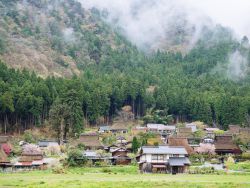
May 24, 2013
Music & Stage: A Decade of Decadence
From vaginas and gaijin J-rap to rock festivals and J-pop's demise
Originally published on metropolis.co.jp on May 2013

STAGE SMUT
Who would have thought a play with the word “vagina” in the title would be a hit in Japan? Yet Eve Ensler’s influential feminist stage spectacle The Vagina Monologues touched a nerve when the New Voice Company debuted it in Japan in 2005 at a time when traditional gender attitudes were entering flux. Japanese audiences also perhaps got more than they bargained for when they attended renowned (and gay) Canadian director Robert Lepage’s tribute to Hans Christian Andersen for the Setagaya Public Theatre in 2006. The Andersen Project, created for the 200th anniversary of the famous Danish children’s writer’s birth, featured scenes depicting the hero as a compulsive masturbator.
GAIJIN J-RAP BOOM
Before Japanese-African-American enka singer Jero became a star, Nice Guy Jin was having a go rapping in Japanese back in 2003. The trio of Dave Olsen and J and Scottie Novosel became a flash in the pan when “Hai Irrashai,” a cross-cultural satire set in a sushi shop, became the ending song for the long-running anime show Ryo-san, and sold over 35,000 copies in the summer of 2003. The trio ultimately became the subject of controversy for their “white-fro” visual ripoff of African-American basketball stars. But the Gaijin J-rap movement was just getting started. Kurofunedan—all students in the University of Memphis’ Japanese department who bonded over a mutual love for hip-hop and Japanese—followed Nice Guy Jin with 2008’s Abare Hodai. Their ambition was not only to sell millions of CDs, but to bring member Ray Rodney’s family’s chicken wing franchise to Japan.
NEW RAVE GENERATION
The first generation of raves in Japan launched in the ’90s on a wave of ecstasy-fueled Second Summer of Love electro-idealism imported from Europe. Events like Equinox, Anoyo, Rainbow 2000 and Vision Quest pioneered the outdoor dance party, drawing unwashed trance music hordes to Japan’s far-flung islands and mountainous interiors. But the first wave ended around the millennium, sometimes amid exhaustion, and in the worst cases amid drug-gang acrimony. The 2000s gave rise to a second wave of more controlled and finely tuned EDM fests along the lines of Labyrinth, Metamorphose and Rainbow Disco Club.
RISE—AND RISE—OF THE ROCK FESTIVAL
By Metropolis issue 500, Japan already had Fuji Rock, Summer Sonic, Rock in Japan, and a host of other fairly large-scale rock fests. With the nation’s economy in the doldrums and the youth demographic plunging, we predicted this Golden Age of Rock was about to come to the end (Jun 29, 2007 issue #692). Well, we were wrong. Japan’s rock festivals have only gone from strength to strength, and a host of new events like Greenroom, Rising Sun, Taico Club, Arabiki, Nano-Mugen and Ryuichi Sakamoto’s No Nukes, as well as domestic do’s such as the MTV and Space Shower events, have emerged to join their ranks.
BLUE MAN, CIRQUE’S IN AND OUT
Japan has long been fertile territory for the stage spectacle, and overseas productions are always eying its lucrative market hungrily. After priming the stage with tours, Canadian circus giant Cirque de Soleil and avant-garde New York theater unit Blue Man Group at the end of the last decade teamed up with corporate Japan to open ambitious, high-tech theaters in the hearts, respectively, of Disney Resort and Roppongi. Cirque’s Zed show and Blue Man drew regular crowds at first, but then came the Lehman Shock and the 2011 disaster. With audiences thinning, they saw the writing on the wall and threw in the towel soon after.
DEATH OF J-POP
It may be exaggeration to declare the death of an entire country’s popular music, but the last decade hasn’t been kind to J-pop. Or at least not as the frothy confection, bubbling with creative style and insouciance, we knew it as in the 1990s and even the early 2000s. By the middle of the last decade plummeting sales, demolition by digital, and an aging demographic had decimated the ranks of Japan’s record labels, causing them to turn to the worst sort of idoru pap. Pizzicato Five, Cornelius, UA, Hikaru Utada, Denki Groove, Supercar and many other fantastic artists that had long given SMAP et al a run for their money gave way to Exile, Ayumi Hamasaki, and even worse, AKB48. The occasional tasty morsel from Perfume or Kyary Pamyu Pamyu (courtesy of producer Yasutaka Nakata) was the only consolation.
ROCK BABES AND GODS
Our personal top musical moments of the last decade were not to be found at a concert or listening to a new album, but in editing the contributions to our “Pantheon of Japanese Rock Chicks,” “Pantheon of Japanese Rock Gods,” “Best Japanese Albums” and “Best Japanese Songs” features. There, we were able to share a love for Japanese music with many other rabid writers, fans, musicians and industry folk, and revel in astonishing artists from the past like iconic songstress Momoe Yamaguchi, Kyoto rabble-rousers Murahachibu and psychedelic guitar god Shinki Chen. We were also able to celebrate Japanese music of the moment at our very own Saiko Tokyo Live Music Showcase.





